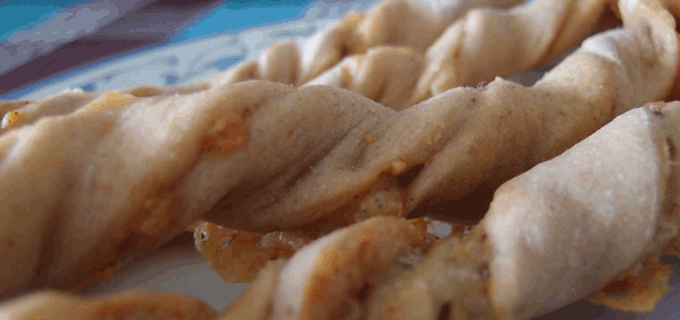 |
| spreadable frankonian cooked mettwurst with tomatoe |
Next to pork knuckle, Weissbier, potatoes
and Sauerkraut, what else is German food famous for? Maybe not a lot, I hear
you say. But for those, that ever had the pleasure of staying in Germany, I
always hear that they enjoyed the rich breakfasts in the morning. Next to fresh
bread and bread rolls you will enjoy a vast variety of fresh fruits, marmalades
and cheese, sausages and cold cuts. Yes, cold cuts for breakfast, you heard me.
I am not sure in which other country you will start your day with a white
sausage or a fresh bread roll with some slices of cold cut or meat spread on
it, some Germans will even enjoy that with a Weissbier (weiss beer). Today I
will post about my trial of making Mettwurst, which is a type of
spreadable German cold meat, something like uncooked minced pork, similar like Tatar
but much better of course. Again, apart from the curing salt (nitrite salt),
everything was more or less easily available. The only medium difficulty about
this recipe is the starch that will bind the aspic that will be created during
your sausage making process. Using potato (or corn) starch will bind the fat
inside the meat spread so the spread will stay nice and silky and easy to
spread.
Ingredients for approximately 1000 gram of “mettwurst”:
- 500 g bacon (or real fatty meat from the stomach)
- 333 g pork shoulder with approximately 10% fat
- 167 g lean beef
Spices
- 14.7 g curing salt
- 2.3 g pepper
- 1.3 g bell pepper powder
- 1.3 g Nutmeg
- 0.3 g Coriander
- 1.3 g Sugar
- 40 g Roasted onions
- 0.7 g Ascorbic acid, Vitamin C is ascorbic acid, so if you don't have, simply use that one, but make sure its tasteless version
- 20 g Potato starch (alternatively you can also use some corn starch)
First you cook all the meats for about 45 minutes, then the
meat is being weighted, don’t weigh the meat before you cook it as the mass
will be reduce during cooking. Keep back 25% of the liquid from cooking the
meat.
Now it’s about grinding the meat with all the spices through
the meat grinder, then please add the broth. After this mix everything well
together and pass it one more time through the grinder. Now everything is ready
to be filled in a glass or in the sausage skin (take the really big caliber ones
if you do this). As I didn’t find the sausage skins, I chose to fill the
mettwurst in the glass. That works like this. Get yourself some preserving
jars. First, cook the empty glasses, the rubber sealing and the cover in
boiling water to disinfect everything. Take the glasses and fill every glass ¾ full
with the mett and close it up with the rubber sealed cover. Now you prepare a
big cooking pot with water that you preheat on a constant heat of 80 degrees Celsius.
Don’t put the heat over 80 degrees Celsius or the sausage will have a problem
later. Stay at exactly 80 degrees Celsius or slightly under. I use a laser temp
gun to monitor the water constantly. Now you cook the glasses with the meat for
2 hours in this water. After two hours, you take them out and put them aside
and cover them with a towel, so they slowly cool down. If they cool down too
fast, the glasses might explode. After they are cool, you can store them, open
them in the next morning and enjoy the metwurst on a slice of bread.











gekochte Mettwurst, die hatte ich seit eeewig nicht mehr, hier gibt es nur die rohe Variante und- fast immer ist Lactose drin, da frage ich mich sehr was das soll. Übrigens auch in vielen Salami- Sorten.
ReplyDeleteAlso, ne schöne Wurst, die mich an meine Kinderzeit erinnert....
Die ist echt super, die gehen bei meiner Familie weg wie… warme Semmeln (die gibt’s ja dann auch immer dazu)?
ReplyDeleteJa, ich sehe das auch ab und zu mal mit der Laktose. Das ist deswegen, weil Laktose eben Flüssigkeit bindet und ich nehme einfach mal an, dass je mehr Wasser, desto weniger Fleisch muss verwendet werden (jetzt mal unabhängig davon ob Pferd oder Schwein).
Ja, ich erinnere mich ebenfalls - in der Metzgerei des Dorfes wo man den Metzger persönlich kannte und wo man als Kind dann noch ein „Rädle Wurschd“ gekriegt hat. Lyoner, Bierschinken, Salami… Seufz…
Aber jetzt genug gejammert, kann man ja alles selber machen ist die Devise heutzutage.